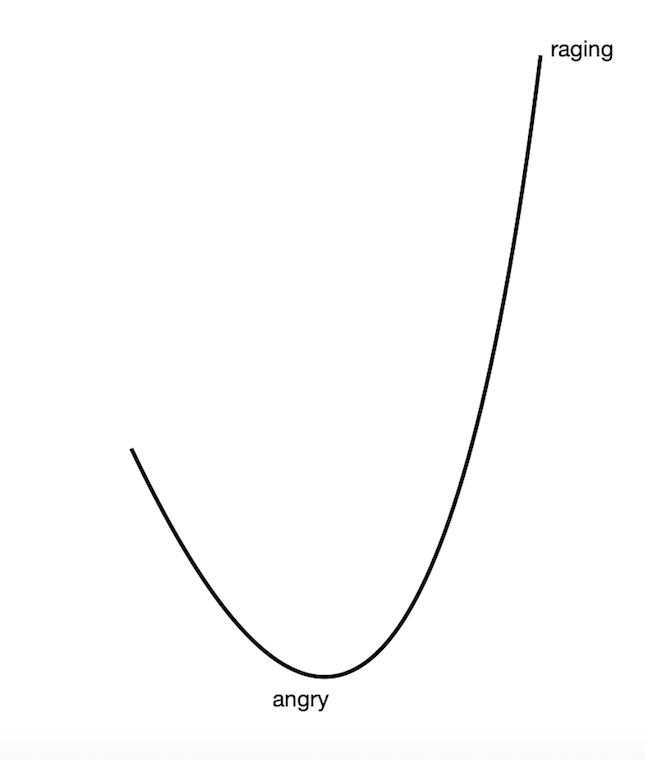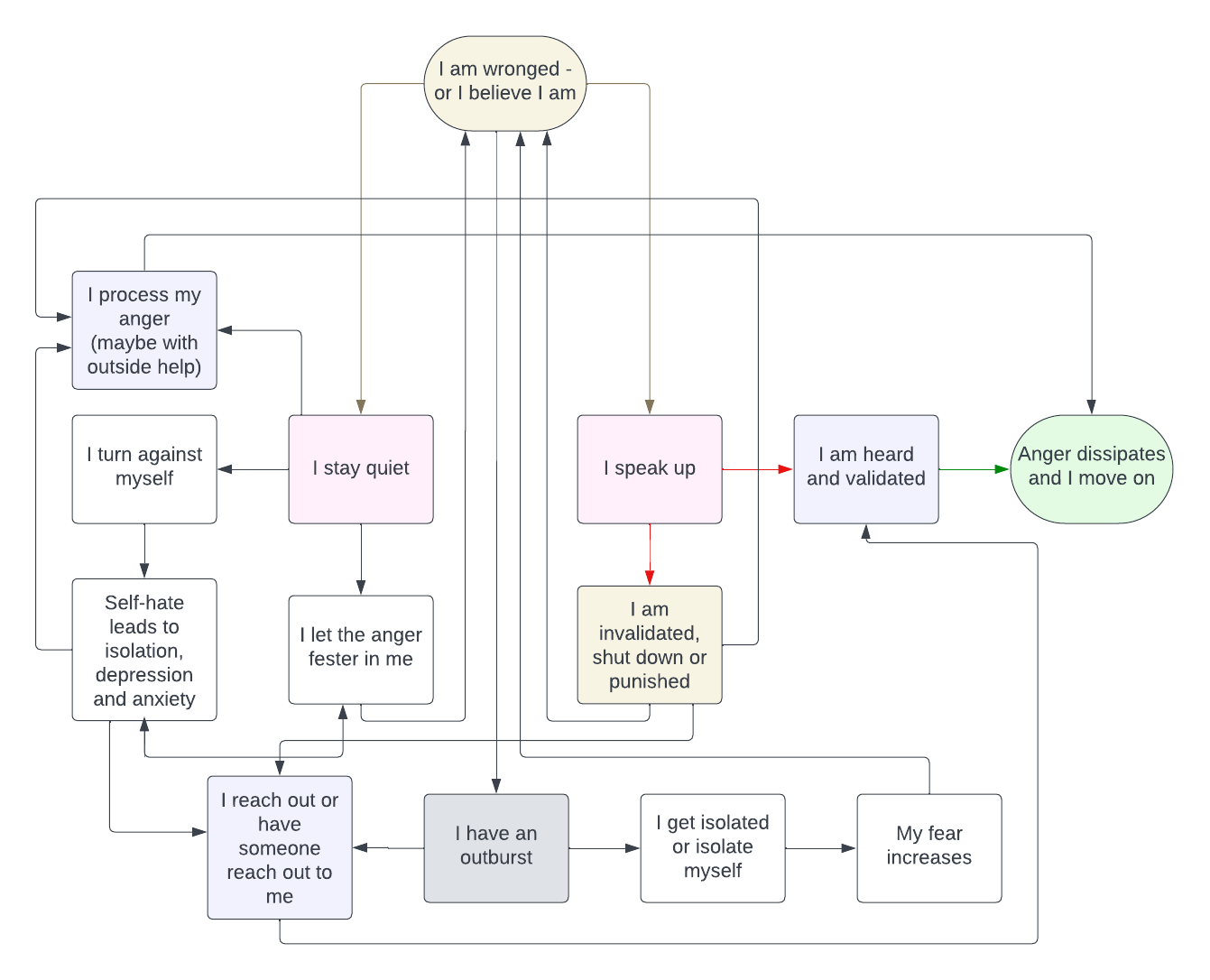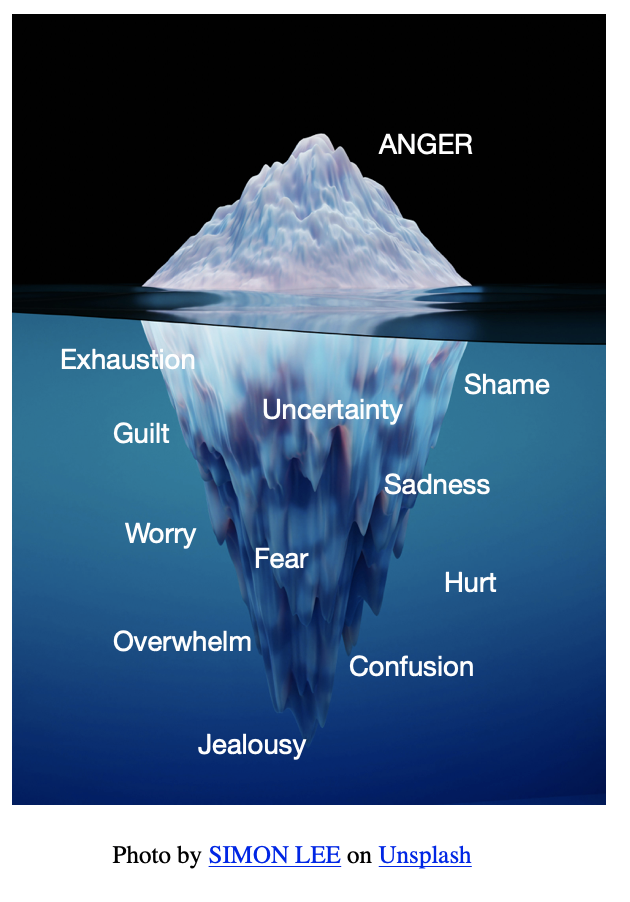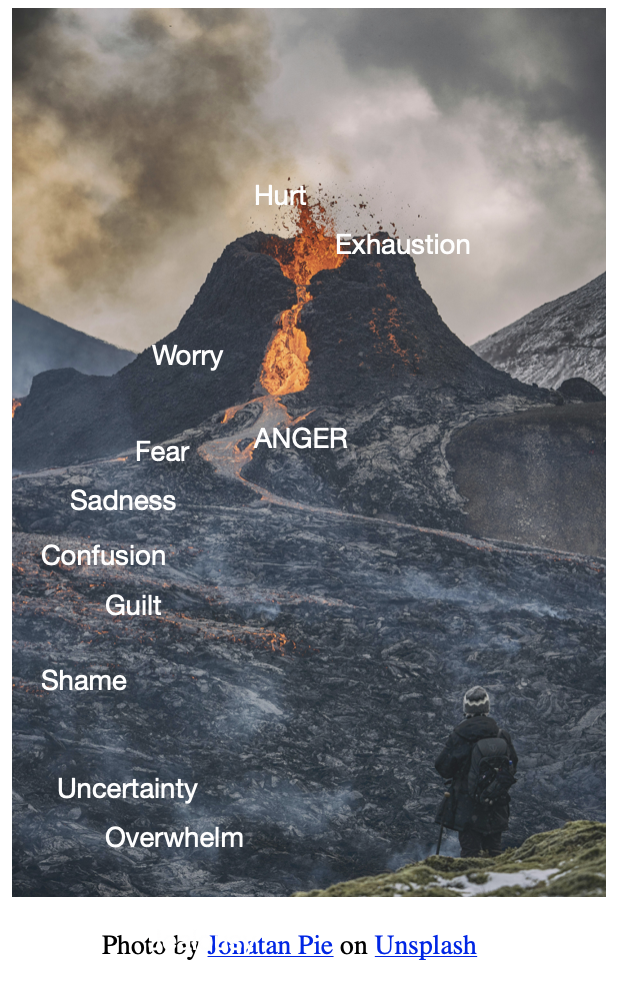Anger. An emotion that seems to engender fear and fascination at the same time.
These days, it seems that signs of anger are everywhere, from international politics to the smallest family unit. We can meet it in the grocery store or in the bedroom, in the workplace or on the highway. It certainly finds its way into the therapy office more frequently.
In therapy it seems that there are three main issues regarding anger that come up frequently:
I have so much anger and it just bursts out; I can’t control it.
I have so much anger but I feel helpless, can’t express it; I’m getting depressed.
I don’t ever get angry; I do feel very depressed (or anxious), though.
Many books have been written about anger: how to manage outbursts, communicate our boundaries and frustrations, deal with the results of internalized anger or avoid anger altogether by turning to love instead. And yet, anger expressions – reasonable and beyond all reason – seem to be increasing in the world.
Like all emotions, anger has a clear purpose in the soul: it informs us about our boundaries, boundaries between ourselves and other people, the world around us and events in our lives. As such, anger helps us become more clear about our individuality. In the soul (or psyche, if you prefer the Greek), anger expresses itself in different ways and with different intensities. If, for example, we are meeting a friend and that friend is late, we may become agitated or annoyed. If that lateness is habitual, we may actually be frustrated. If somebody insults us, questions us, pushes us beyond our capacity or our desire, we may experience real anger. And if we feel continuously disregarded or overruled by others and the world, we may experience rage.
Working with an anger curve like the one below can be helpful in exploring where we are on the anger scale for a particular situation. To do so, place the following words on the curve below, depending on your experience of their intensity:
| frustrated | displeased | hateful | infuriated |
| furious | annoyed | raging | outraged |
| irked | mad | irritated | incensed |
| livid | exasperated | resentful | fuming |

There may be other words that come to mind that you’d like to add. Go for it. Understanding your anger is a first step of working with it in a meaningful way.
It is important to understand that in and of themselves, none of these expressions of anger are negative. They simply offer information. However, our soul also is connected to memory and reason. That means that our anger may have an impact on both memory and reason and if it is not released or worked with appropriately, anger may come to impact many other emotions, creating something of an amalgamation of different feelings which all may come to be expressed in anger.
A currently popular metaphor for anger in the soul realm is that of the anger iceberg. The idea is that anger is a secondary emotion, the emotion that is visible although it is actually expressing other, more primary or more important emotions that underlie it, such as shame, guilt, worry and so forth.
However, I hold that anger in fact is one of four primary emotions together with fear, happiness, and sadness. A newborn baby will express its displeasure at being hungry or wet long before it begins to feel guilty, ashamed, or even worried.
Over time, if we don’t express our anger, our need for boundaries and respect, these cooped-up emotions will inevitably burst out in some kind of eruption, either to the outside world in the form of an explosion or rage-outbreak or breaking open internally in the form of self-hatred and self-loathing, severe depression, and self-harm. This is why I would describe anger in the soul realm as a volcano rather than an iceberg.
This metaphor, I believe, makes it apparent that healthy anger expression is indeed vital to mental health. Healthy anger is not expressed by yelling or screaming. It starts with the setting of appropriate boundaries through verbal communication. “No, this is not OK. Please don’t talk to me this way. I cannot accept this. No, I will not do this.” – all these are anger expressions on some level.
However, all too often such expressions of boundaries, anger and pride are not encouraged. We are not taught to argue respectfully, even if we don’t agree with another’s perspective on a topic. Rather, we are encouraged to agree with others for the sake of harmony. We have become incapable of accepting discourse in favour of being more easily accepted in the society of those we live with. Frequently, the simple statement “I don’t agree” is interpreted as aggression rather than an expression of boundaries, growth, and personal learning.
Love, we often are told, is the best antidote to anger. True, but easier said than done. On a soul level anger has been protecting us from boundary violations for a long time. We won’t let go of this protection if we don’t have other ways of dealing with what we believe to be a true danger to our system or even our life. Trying to simply override or disregard our anger is likely to feed the volcano by providing more suppressed emotions melting down into internal pressure. However, love is indeed the emotion that can help us heal from anger that has gotten out of hand. Let’s look at how that may work.

When a boundary is violated – or we believe it is – we react. This is a healthy response. But there are several possible reactions to choose from – and some of those are more self-respecting or self-loving than others. If I speak up in a clear and appropriate way, I honour myself. If I stay quiet so that I can evaluate my best possible response or deal with emotions other than anger before deciding my next steps, that, too, can be self-respecting and self-loving. However, if I stay silent out of fear, self-respect and self-love are lost, even if I believe that I stay silent out of love and respect for another. And if I have an outburst, well, neither self-love nor love for another are expressed. So my initial response to a boundary violation already offers an opportunity to consider the most loving option – for myself as well as for the other person involved.
But that is not the only place where a loving attitude can make a difference. At several other times in the anger cycle, I can choose to reach out for a conversation, be curious about the other person’s perspective of the situation, take a moment to contemplate what my actual needs are and how I can get them met in other ways. Even walking away from that particular situation or person can be a loving act when it is done consciously.
Just like anger has many different faces and expressions, so love can manifest in a large variety of ways. Affection, warmth, curiosity, attention, adoration, devotion, care, compassion, interest, openness, regard, kindness, altruism, friendliness, concern – all these are expressions of a loving attitude, and we have access to all of them at any time if we allow ourselves to slow down for a moment.
Mindfulness – or simply the ability to stop, count to ten and breathe before reacting – is a good tool for this. But we need to practice it when we are not angry, otherwise it is illusory to believe we can use it effectively in a stressful, anger-inducing situation.
Therapy also helps by creating awareness of old patterns that make certain situations more touchy, increasing the likelihood of us being triggered into an anger reaction. Therapy also can help us identify our boundaries, build better communication skills and deal with some of the emotions we have suppressed for a long time, thus feeding our anger-volcano.
Interest and curiosity in the lives and thoughts of others also is a wonderful tool to keep anger rational. By allowing ourselves to listen to the opinions and experiences of others we may be able to see and accept that they are also living in their fear and anger and that, if they lash out at us, it may be because they are caught in the same cycle we live in. This does not mean we have to agree or condone their behaviours toward us. But when we strive to see the other as a human being, too, with their concerns, fears and experiences, then we can also find some commonality with them, because we can see our own fear, anger and concern reflected in them. In this way, we can truly reach for love, a love that is based on an appreciation of our common humanity with all its wonderful beauty but also with all its flaws. This, ultimately, is the strongest defence from anger – and from fear.
Of course, we don’t need to let other people walk all over us, hurt us or actually physically violate us. There still need to be boundaries; but I truly believe that if we have a curiosity toward the experience of the other we can make sure that our boundaries stay just that: genuine boundaries, not walls.



